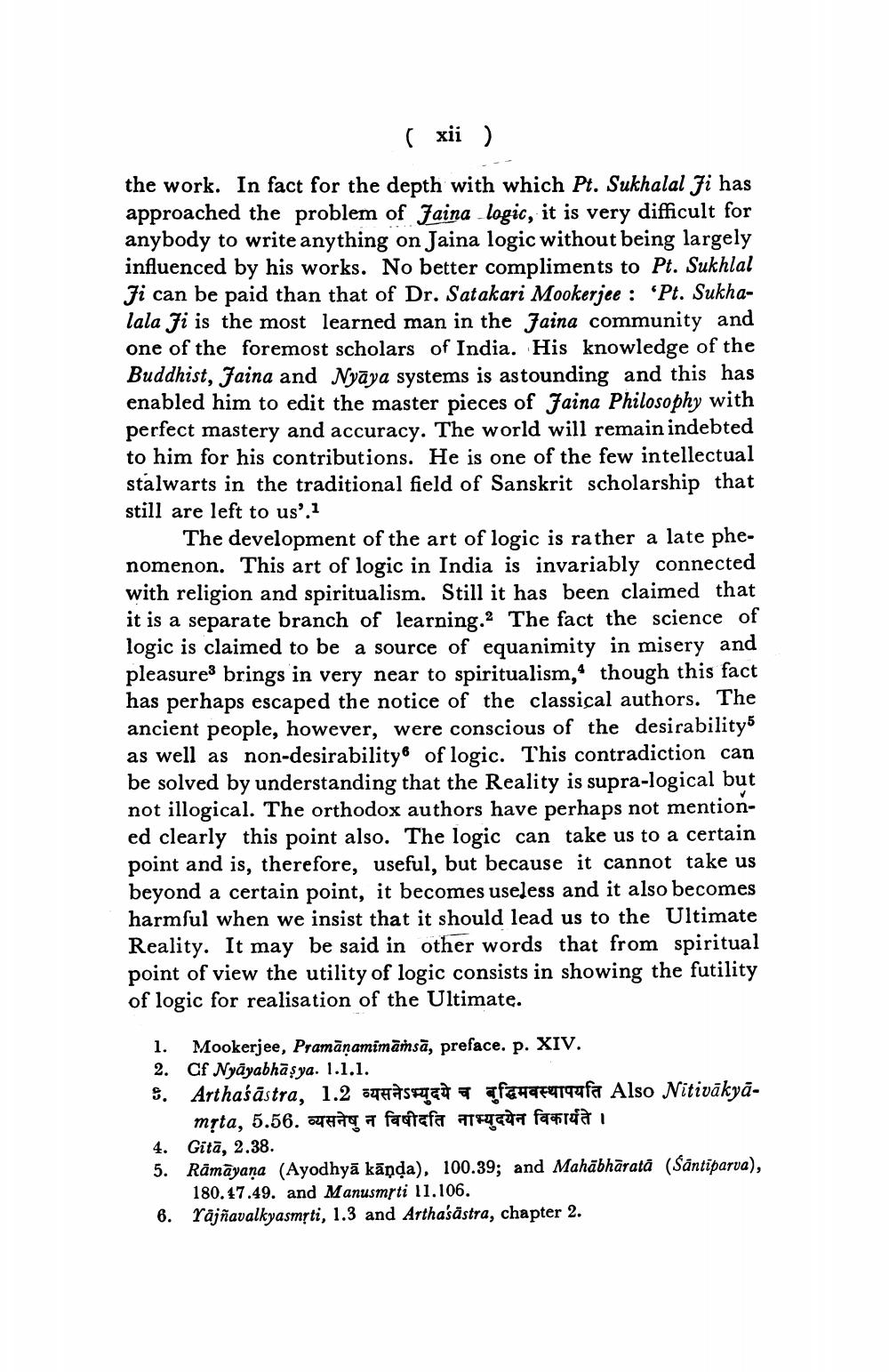________________
( xii) the work. In fact for the depth with which Pt. Sukhalal Ji has approached the problem of faina logic, it is very difficult for anybody to write anything on Jaina logic without being largely influenced by his works. No better compliments to Pt. Sukhlal Ji can be paid than that of Dr. Satakari Mookerjee : Pt. Sukhalala Ji is the most learned man in the faina community and one of the foremost scholars of India. His knowledge of the Buddhist, Jaina and Nyāya systems is astounding and this has enabled him to edit the master pieces of Jaina Philosophy with perfect mastery and accuracy. The world will remain indebted to him for his contributions. He is one of the few intellectual stalwarts in the traditional field of Sanskrit scholarship that still are left to us'.1
The development of the art of logic is rather a late phenomenon. This art of logic in India is invariably connected with religion and spiritualism. Still it has been claimed that it is a separate branch of learning. The fact the science of logic is claimed to be a source of equanimity in misery and pleasures brings in very near to spiritualism, though this fact has perhaps escaped the notice of the classical authors. The ancient people, however, were conscious of the desirability as well as non-desirability of logic. This contradiction can be solved by understanding that the Reality is supra-logical but not illogical. The orthodox authors have perhaps not mentioned clearly this point also. The logic can take us to a certain point and is, therefore, useful, but because it cannot take us beyond a certain point, it becomes useless and it also becomes harmful when we insist that it should lead us to the Ultimate Reality. It may be said in other words that from spiritual point of view the utility of logic consists in showing the futility of logic for realisation of the Ultimate.
1. Mookerjee, Pramānamimāṁsā, preface. p. XIV. 2. Cf Nyāyabhāsya. 1.1.1. $. Arthaśāstra, 1.2 sqasigat afehatatafa Also Nitivākyā
mrta, 5.56. a 7 fastafa atraca farà 4. Gitā, 2.38. 5. Rāmāyaṇa (Ayodhyā kāņda), 100.39; and Mahābhārată (Säntiparva),
180. 47.49. and Manusmrti 11.106. 6. rajñavalkyasmrti, 1.3 and Artha'sästra, chapter 2.




